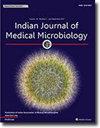Chandipura virus resurgence: Insights from Indian outbreaks and the path forward
IF 1.4
4区 医学
Q4 IMMUNOLOGY
引用次数: 0
Abstract
Background
First isolated in 1965 from a case of febrile encephalopathy, the Chandipura virus (CHPV) causes sporadic cases as well as periodic outbreaks of encephalitis in parts of India. Transmitted by sandflies and mosquitoes, CHPV infection has high mortality within 48 h of hospitalization, with children bearing the brunt of the illness. The virus garnered global attention in the middle of 2024 as India witnessed its largest outbreak in the last two decades.
Objective
This article aims to synthesise the existing knowledge on various aspects of CHPV and outline current actions needed as well as potential directions for future research.
Content
Between early June and August 15th, 2024, India reported 245 cases of encephalitis from the states of Gujarat and Rajasthan, 64 of which were laboratory-confirmed CHPV infections. The mortality toll of the outbreak was 82, accounting for a case fatality rate of 33 %. With this outbreak, the virus has expanded its niche from central and southern to north-western India. Significant advancements in the understanding of the neuropathogenesis of the virus and the development of diagnostic assays have been made in the 21st century. However, no specific antiviral drugs or vaccines are available. A G-protein-based recombinant vaccine and an inactivated vaccine have shown favourable results in pre-clinical trials. The need of the hour is to fast-track the development of an effective vaccine. A high suspicion for early identification and prompt referral of cases, decentralized diagnostic facilities, sensitization of healthcare workers, integrated vector management and effective reporting and surveillance systems are all needed to curb the menace of this perilous pathogen. The current outbreak should serve as a wake-up call to foster intersectoral collaboration between policymakers, public health experts, epidemiologists, virologists, neurologists, paediatricians, and anthropologists to develop and implement effective strategies against the virus.
钱迪普拉病毒卷土重来:印度疫情的启示与未来之路
背景钱迪普拉病毒(CHPV)于 1965 年首次从一例发热性脑病病例中分离出来,在印度部分地区引起零星病例和周期性脑炎爆发。CHPV 感染通过沙蝇和蚊子传播,住院 48 小时内死亡率很高,儿童首当其冲。2024 年年中,印度爆发了近二十年来规模最大的一次疫情,因此该病毒引起了全球关注。内容2024 年 6 月初至 8 月 15 日期间,印度古吉拉特邦和拉贾斯坦邦报告了 245 例脑炎病例,其中 64 例经实验室确诊为 CHPV 感染。疫情造成 82 人死亡,病死率为 33%。随着疫情的爆发,该病毒的传播范围已从印度中部和南部扩展到西北部。进入 21 世纪以来,人们对该病毒神经发病机制的认识和诊断方法的开发都取得了重大进展。然而,目前还没有专门的抗病毒药物或疫苗。一种基于 G 蛋白的重组疫苗和一种灭活疫苗在临床前试验中显示出良好的效果。当务之急是快速开发有效的疫苗。要遏制这种危险病原体的威胁,就必须高度怀疑病例的早期识别和及时转诊、建立分散的诊断设施、提高医护人员的敏感性、进行综合病媒管理以及建立有效的报告和监测系统。当前的疫情应该成为一个警钟,促进决策者、公共卫生专家、流行病学家、病毒学家、神经学家、儿科医生和人类学家之间的跨部门合作,以制定和实施有效的病毒防治战略。
本文章由计算机程序翻译,如有差异,请以英文原文为准。
求助全文
约1分钟内获得全文
求助全文
来源期刊

Indian Journal of Medical Microbiology
IMMUNOLOGY-
CiteScore
2.20
自引率
0.00%
发文量
154
审稿时长
73 days
期刊介绍:
Manuscripts of high standard in the form of original research, multicentric studies, meta analysis, are accepted. Current reports can be submitted as brief communications. Case reports must include review of current literature, clinical details, outcome and follow up. Letters to the editor must be a comment on or pertain to a manuscript already published in the IJMM or in relation to preliminary communication of a larger study.
Review articles, Special Articles or Guest Editorials are accepted on invitation.
 求助内容:
求助内容: 应助结果提醒方式:
应助结果提醒方式:


